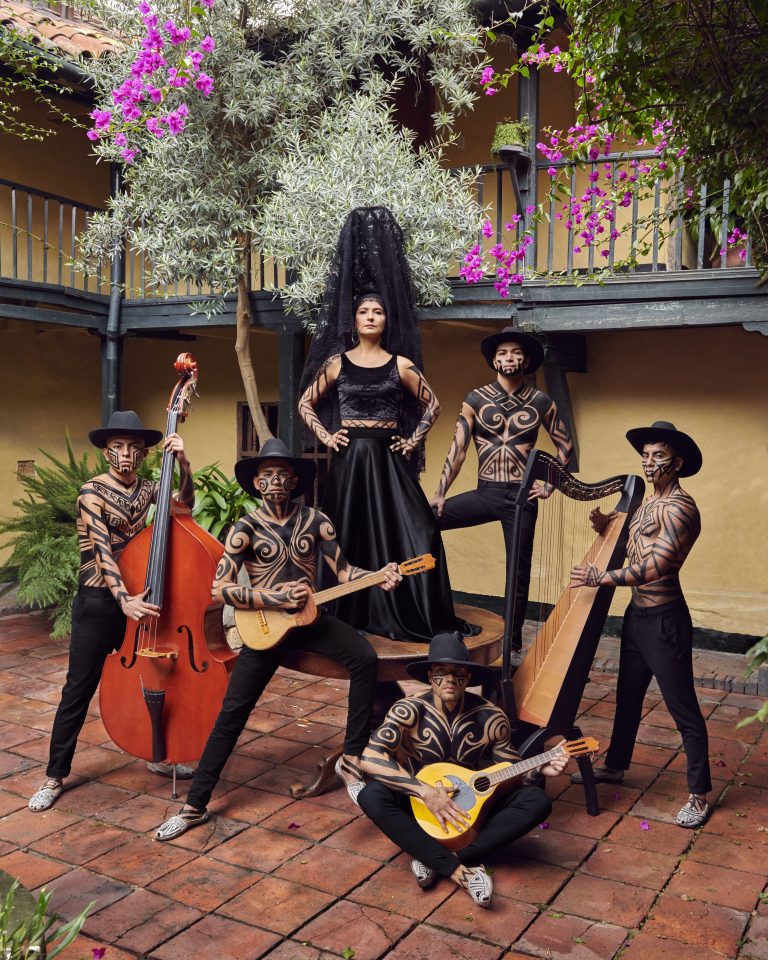
Cimarrón: 24 Years of Bringing Joropo to the World
01 February, 2024Silvia Rothlisberger speaks to Ana Veydó, singer and band leader of Cimarrón, Colombia’s game-changing joropo band doing things their own way and celebrating the genre’s Afro and Indigenous roots.
Cimarrón is a joropo band from the Colombian region of Orinoquía where the landscape is formed by wide open plains and savannahs leading to neighbouring Venezuela. The joropo genre has made its way over this invisible border and is popular among the cattle ranchers of the region.
The band was founded by Colombian harpist Carlos ‘Cuco’ Rojas and singer Ana Veydó in the year 2000. Since then, they have taken joropo to international stages. The group challenges this male-centric genre, fronted by a woman as a lead singer. They also incorporate into their act traditions from the Indigenous and African roots that prevail in this region, adding deer-skull whistles and a zapateador (shoe stomper) performing as percussion. Cimarrón have been nominated for a Grammy and a Latin Grammy, have gained several awards and regularly collaborate with world-known musicians like the Welsh harpist Catrin Finch.
Cimarrón’s live shows are a powerful experience with Ana Veydo’s tough voice accompanied by trance-inducing shoe stomping and virtuoso musicians. It’s a joropo experience enhanced by Veydó’s stunning colourful dresses and bull-horn headdress while the men dress in black with naked torsos decorated with tribal tattoos and cowboy hats.
After Cuco Rojas died in 2020, Ana Veydó has taken over leadership of the band and in 2022 they released their album La Recia (“the tough woman”), an album that celebrates the strength of women of the Orinoquía region.
After a successful tour, called La Gira Mundial del Joropo, around Europe and the USA, we talked to Ana Veydó about the work Cimarrón has been doing since the group started and the challenges she has faced as a woman in a male-centric genre like joropo.
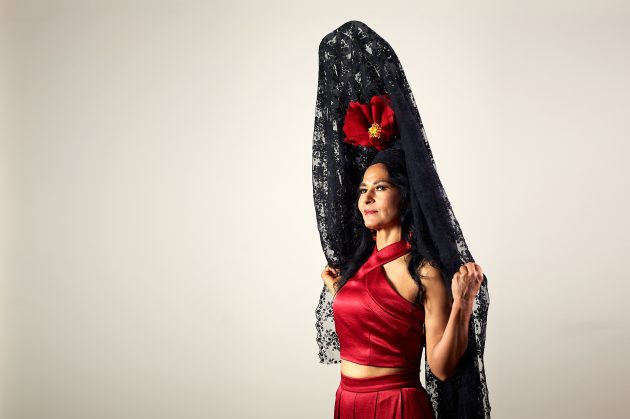
S&C: You are from Boyacá in the Andean region of Colombia, but joropo is a genre mostly listened to in the Orinoquía region. What was your first encounter with joropo?
AV: I started listening to joropo on radio stations from Venezuela. Living in the countryside it was easy to connect with that music as the songs narrated my daily life. Songs about cattle work like separating calves from their mothers and milking cows. These were very tough joropos and always sung by men, I never heard women singing in those radio shows. I had ten brothers and it was them who tuned into those radio stations, so in a way, it was them who introduced me to this music.
As you just mentioned, it was always men singing joropo, in fact it’s a genre known to be male-dominated. What obstacles have you found as a woman who is the lead singer and the band leader of a joropo group?
It’s been very hard. I must begin by saying that in the ‘80s when I started to get involved in festivals, it was so naturalised that this was a genre led by men that it wouldn’t even be questioned. All I could aspire to in this genre was to take part in the different festivals around the region but to think beyond that, like being part of the artistic scene – a place occupied only by men – was unthinkable. You assumed that and accepted it, but this changed for me when I walked away from this space and started studying music in the conservatory. Studying music and history made me question all this and made me imagine a different space for what I wanted to do and be in this genre. Knowing that it was very hard to break through in joropo as a woman and in the region, I started to negotiate with these spaces usually dominated by men and in a way I managed it.
I recorded two solo studio albums. The first one was called Recio (Tough) a tribute to my idols, like Angel Custodio Loyola and other Venezuelan singers. It featured the songs that made me want to sing joropo at the very beginning. Then, the second album was Mataguayabo, with this album I explored the aesthetic of the Orinoquía region.
Finally, In the year 2000, I joined Cimarrón, with Carlos ‘Cuco’ Rojas who was the artistic director of the project and then he became my life partner. Cimarrón gave me the space to reflect and to include all the ideas that came from a more open mind and from the idea of integrating what the region of Orinoquía really is.
This is a medium that’s still very male-oriented, and I’m not only talking about the artists but also the institutions, the curators, the spaces where joropo moves commercially here. Joropo has given me the possibility of showing another vision and another way of making music in the region.
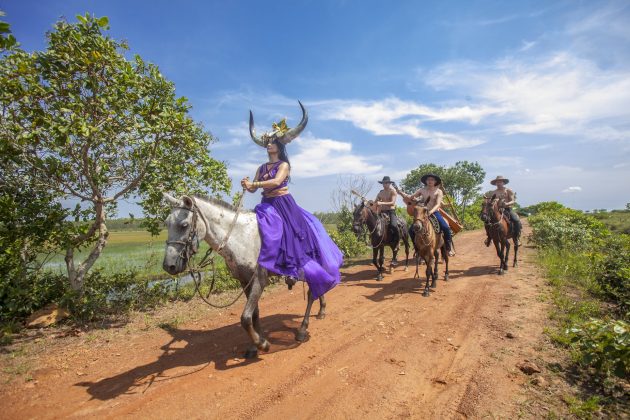
It’s very revealing, perhaps of the changing times, that your first solo album more than two decades ago was called Recio (the Spanish masculine form of tough) and now your latest album with Cimarrón is called La Recia (the tough woman). If your first album was a tribute to the male artists that inspired you to sing joropo, who are the tough women who inspired La Recia?
[Ana gasps]. Tough was a product of how I saw myself and how I wanted to present myself at the time. Tough is a masculine term and all the repertoire in that album was from men, including the main reference on that album, Angel Custodio Loyola. Those two albums [Recio and La Recia] and those two words represent my evolution: the change in terminology reflects how I was changing and how the way I saw joropo evolved. It also reflects an internal change in me: in believing in myself and in what I could achieve. The only way I could see myself singing joropo in those years was through the male gaze. The terminology shifts as I find my own voice and vision, having my own criteria of what I want to say and represent through music.
After the death of the founder of Cimarrón, the maestro Carlos ‘Cuco’ Rojas in 2020, what changes have occurred in Cimarrón with you as the group’s leader?
The ideas that I brought to Cimarrón when I joined were the ones that gave the group its particular seal. Yet, I always allowed Carlos to be the one who presented them to the group because I knew if they came from me they would be criticised, but accepted if they came from Carlos. For example, the stage routines, the clothes we wear on stage, and also a different vision of what a llanero [someone from the plains] is. Even though when I met Carlos he was different from other men of the Orinoquía in his positions, his way of thinking and seeing joropo was very similar to other musicians of the region. We started to work together and to negotiate with these new ideas and the band started to take a different path but it was always Carlos who presented all the new ideas so that they would come from a man.
After Carlos died, people were saying “Cimarrón will die too because the leading member died, the one who has all those ideas, who imagines, who directs,”’ it was a challenge for me because I had to proove that I had influenced the group’s direction throughout the years. It was as if people thought that I had been part of the group for 23 years without contributing anything. It was also a challenge because Carlos died at the beginning of 2020 and then came the pandemic so it was a double crisis because we had to cancel the tour and everything we had planned. Many doors were shut during this period. It was hard because we are a band that mainly plays abroad. On the other hand, lockdown allowed me to grieve and to start working on the new album.
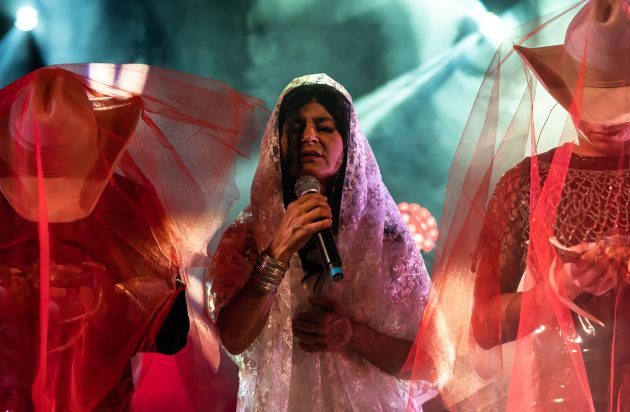
You just said that Cimarrón is a band that mainly tours abroad, why do you think that is?
Cimarrón is a project that doesn’t echo much in the institutions and among those who curate the events here, because we have a repertoire different from the one people in the region expect. The audience that listens to this music here expect songs around drinking alcohol or broken hearts. Our music questions the identity that has been constructed around joropo. To me it’s important that if I talk about music from the Orinoquía region, I talk about the different groups that live in this region and that have helped shape this music. And this position isn’t well accepted here.
You mention other ethnic groups that belong to the Orinoquía which you reflect in your music as well, what groups are these?
Of course! This is a music that was whitened so that it was more accepted and not whitened from a musical point of view but by denying that it has influences from Afro descendants and Indigenous peoples. For Cimarrón it’s very important to recognise that this music has three components. Two of them have been made invisible. People always mention the Andaluz component, here they say that this music comes from flamenco, but it is a way of denying that this music also comes from Colombian Afro-descendants and Indigenous peoples that live in this region. To us it’s very important to recognise these contributions, and not only to say it but to put it in the music for people to see it and hear it.
Talking about this isn’t easy here, because recognising the Afro component of this music is recognising that it has another force. Regarding the influence from the Indigenous communities it’s even worse. These Indigenous communities are still here, like the Sikuani or the Sáliba to name two, because there are many more. Also this is music that we inherited from Venezuela, specially this format of harp, bass, maracas and cuatro; and in Venezuela too the contributions from these communities isn’t always recognised.
This has been our task with Cimarrón: not to rescue but to show with our music these contributions to joropo.
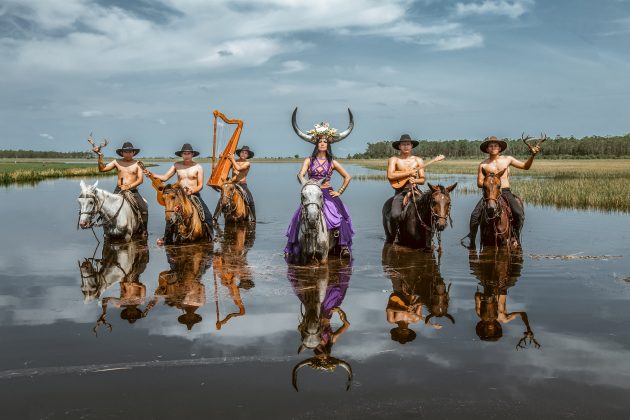
How does Cimarrón reflect these contributions from Afro descendants and from Indigenous peoples in your music?
The traditional format of joropo is harp, cuatro, bass and maracas; and the maracas are in a way the percussion. But in Cimarrón we decided to make a stronger percussion with the zapateador, we were the first group that brought in the zapateador (shoe stomper) to dance alone because that ‘wasn’t allowed’. The traditional format of dancing joropo is a man and a woman dancing, but we put the male zapateador to dance alone performing as the percussion. Then we added the Peruvian cajón, then the Afro-Colombian tambora, and finally the zurdo (large bass drum). That’s how we arrived at the percussion setup that we have today in our music and our live shows. We brought back kinds of percussion that had been lost.
In the melodies of the Sikuane community’s music you can hear the similarities with the tonadas, which are melancholic songs associated with farming, herding and milking. I remember 20 years ago thinking, wondering how it was possible that this music became more associated with the work of the [Spaniard] colonisers rather than with the work of Indigenous peoples. When the root is there, you hear both musics and you can see how identical they are. And in Cimarrón we included in our interpretation of the tonada Palomita the deer-skull whistles, an instrument from an Indigenous community. They gave it to us during an event and we included it in our music. In “Velorio”, the first song on the album La Recia, we included the manguaré which is an instrument from the deep forest. Our idea is not to say “Look! We use these instruments” but to show them off, so that people ask “Where does it come from?”, so that we can explain they are from the Orinoquía region and open up those conversations.
In 2023 you toured around Germany, France, Norway, Hungary, Czech Republic, Wales, England (where I had the chance to see Cimarrón live) and USA. What’s next for Cimarrón in 2024?
La Gira Mundial del Joropo continues! This year we are going to be playing at the New Orleans Jazz Festival in May alongside headliners The Rolling Stones, Foo Fighters and The Killers. Then we’re going to tour for two months in Japan where we’re going to give 20 concerts in the country’s main cities. We’re very happy and excited about this. It’s going to be big and muy chévere!
Follow Sounds and Colours: Facebook / Twitter / Instagram / Mixcloud / Soundcloud / Bandcamp
Subscribe to the Sounds and Colours Newsletter for regular updates, news and competitions bringing the best of Latin American culture direct to your Inbox.

